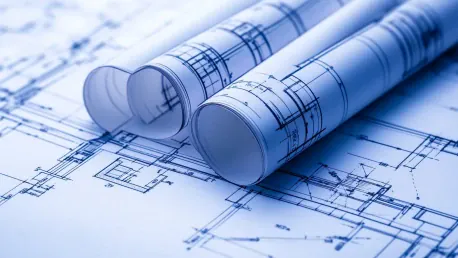The civil engineering sector is witnessing a transformative shift with the increasing adoption of alternative delivery (AD) methods. These methods are designed to expedite and simplify the execution of infrastructure projects, addressing the limitations of traditional models like design-bid-build (DBB). As urbanization and the need for modern infrastructure continue to rise, the demand for efficient project delivery models has become critical. This article delves into the effectiveness of various AD models in enhancing project delivery through improved risk management, collaboration, and efficiency. By exploring methodologies such as Construction Manager at Risk (CMAR), Design-Build (DB), and Progressive Design-Build (PDB), we aim to illustrate how these innovative approaches are reshaping the landscape of civil engineering.
The Rise of Construction Manager at Risk (CMAR)
Construction Manager at Risk (CMAR), also referred to as construction manager/general contractor, is gaining traction due to its collaborative framework. This model involves separate contracts for the design consultant and the construction manager, fostering a cooperative effort throughout the project. In this dynamic, the construction manager provides critical input during the design phase, including cost estimates and potential construction methodologies, which can significantly improve the project’s efficiency and mitigate risks. One key benefit of CMAR is the guaranteed maximum price (GMP), which shifts the risk of cost overruns to the contractor, thereby reducing the owner’s financial exposure. This arrangement ensures that the project stays within budget, providing a level of financial predictability not always achievable with traditional methods.
However, CMAR requires contractors with specific expertise, which can be a limiting factor if such professionals are not readily available in the market. The necessity for highly skilled contractors who can manage both the design and construction phases means that project owners must carefully select their partners. Despite this constraint, the model’s ability to mitigate risk and enhance collaboration makes it a preferred choice for many infrastructure projects. High-profile projects, such as highway expansions and transit system upgrades, have successfully utilized CMAR to achieve their goals within stipulated timeframes and budgets. This method’s emphasis on teamwork and early contractor involvement sets it apart from more segmented traditional approaches, where design and construction phases occur in isolation.
Efficiency with Design-Build (DB)
The Design-Build (DB) model is another popular alternative delivery method, selected based on the proposal that offers the best value. This model integrates design and construction responsibilities, assigning both tasks to a single entity. This integration reduces the owner’s involvement during the design phase and ensures a streamlined process. By consolidating these responsibilities, the DB model aims to address the inefficiencies and communication gaps often prevalent in traditional methods where designers and builders work independently. The DB contractor assumes the risk of delivering the project at the agreed-upon price, minimizing the owner’s exposure to cost overruns and enhancing financial predictability for stakeholders.
While the DB model can add time to procurement due to its two-step process, it assures efficiency and speed in project delivery. The initial phase involves selecting a design-builder based on qualifications, while the second phase focuses on pricing and execution strategies. Although this approach may lengthen the upfront selection period, it typically results in fewer delays and conflicts during construction. This upfront cost commitment by the owner results in a more predictable and expedited project timeline, providing a clear path from conception to completion. Projects using the DB model can benefit significantly from the unified responsibility for design and construction, resulting in innovative solutions and expedited timelines.
In practice, the DB model has been widely adopted for various infrastructure projects, from highway constructions to public buildings. The method’s ability to streamline discussions, consolidate accountability, and promote creative problem-solving is highly valued in the complex world of civil engineering. Moreover, as infrastructure demands grow and timelines shorten, DB’s integrated approach to project delivery can play a crucial role in addressing these challenges effectively.
Collaboration through Progressive Design-Build (PDB)
Progressive Design-Build (PDB) emphasizes substantial involvement of the owner and stakeholders in the design process. This one-step, qualifications-based procurement model is divided into two phases, allowing for a collaborative approach to project development. In the first phase, the design-builder is selected based on qualifications, and the design process commences with active participation from the owner and other stakeholders. The absence of a binding contract until a mutually agreed-upon level of design is achieved provides flexibility and fosters a cooperative environment. This phased approach allows for adjustments and refinements, ensuring that the final design aligns well with the project’s goals and budget.
PDB’s collaborative nature helps advance the project within the targeted cost and schedule, offering streamlined procurement and significant time savings. The involvement of all major stakeholders early in the design phase can lead to innovative solutions tailored to specific project needs, thereby enhancing the overall quality and functionality of the infrastructure. However, the model poses unique risks, such as potential disagreements at the end of the first phase and challenges related to extending professional liability insurance. These risks require effective communication and coordination among all parties to ensure that the project progresses smoothly without unexpected delays or escalations.
Despite these challenges, PDB has been successfully implemented in various complex projects, especially those requiring a high degree of customization and stakeholder engagement. The model’s flexibility and emphasis on collaboration make it particularly suitable for large-scale infrastructure projects where stakeholder input is crucial for success. By fostering a cooperative atmosphere and encouraging shared decision-making, PDB can lead to more informed and strategic project decisions, ultimately resulting in a more efficient and effective project delivery process.
Factors Influencing AD Model Selection
The choice of an optimal procurement method depends on several factors, including local market conditions, resource availability, contractor experience, and the acceptable level of risk for both owners and contractors. Each project’s unique requirements and context play a crucial role in determining which AD model will provide the best results. For instance, in regions where highly skilled contractors are scarce, models like CMAR that rely on specialized expertise may not be feasible. On the other hand, areas with abundant contractor resources might benefit from more collaborative models like PDB, which leverage extensive stakeholder involvement.
Previous successes with specific AD models can also influence decision-making, as seen with the Washington Metropolitan Area Transit Authority’s preference for CMAR based on their positive experience with the Metro’s Yellow Line rehabilitation. Successful outcomes in past projects provide valuable insights and benchmarks for future endeavors, guiding project owners in selecting the most appropriate AD model for their needs. Transparency in sharing lessons learned and best practices can further aid in refining these models for better outcomes in subsequent projects.
Recent supply chain issues, exacerbated by the COVID-19 pandemic, and legislative actions like the Infrastructure Investment and Jobs Act have impacted material prices and engineering resources. These conditions have shifted more risk onto owners, as contractors demand upfront payments for mobilization and long-lead items, altering the dynamics of AD model selection. The pandemic has underscored the need for flexible project delivery methods that can adapt to unforeseen circumstances, ensuring that projects can proceed even amid supply chain disruptions and labor shortages.
In this evolving landscape, the shifting risk appetite of contractors has also become a significant consideration. Top-tier firms may be reluctant to bid on multibillion-dollar DB contracts without favorable terms, further influencing the AD landscape. This dynamic has led to a more strategic approach in selecting and negotiating AD models, with a focus on achieving a balance between risk management and project efficiency.
The Role of Public-Private Partnerships (P3)
Construction Manager at Risk (CMAR), also known as construction manager/general contractor, is increasingly popular due to its collaborative structure. This approach includes separate contracts for the design consultant and the construction manager, promoting teamwork throughout the project. The construction manager provides important insights during the design phase, offering cost estimates and construction techniques that can enhance project efficiency and reduce risks. A significant advantage of CMAR is the guaranteed maximum price (GMP), which transfers the risk of cost overruns to the contractor, thus minimizing the owner’s financial exposure. This ensures the project remains within budget, delivering a level of financial predictability often missing in traditional methods.
However, CMAR demands contractors with specialized skills, which can be a challenge if such experts are scarce. Because these contractors must handle both design and construction phases, project owners need to choose their partners carefully. Despite this limitation, CMAR’s capacity to reduce risk and boost collaboration makes it a favored option for many infrastructure projects. Notable projects, such as highway expansions and transit system upgrades, have effectively used CMAR to meet their targets within set timeframes and budgets. The model’s focus on teamwork and early contractor involvement distinguishes it from traditional methods, where design and construction occur separately.









